#Russell Barr
Explore tagged Tumblr posts
Text


Death of an Angel (1952) Charles Saunders
October 26th 2024
#death of an angel#1952#charles saunders#raymond young#jean lodge#julie somers#patrick barr#russell waters#jane baxter#russell napier#katie johnson#frank tickle
3 notes
·
View notes
Photo




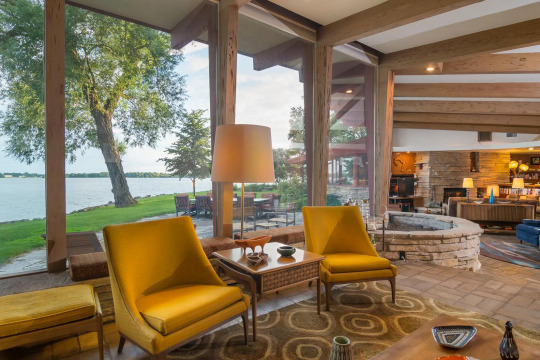





Demeure de style ''usonien'' située à Beaver Dam, Wisconsin, création de l'architecte Russell Barr Williamson en 1954. Photo Beau Meyer. - Source MCM Daily.
94 notes
·
View notes
Text
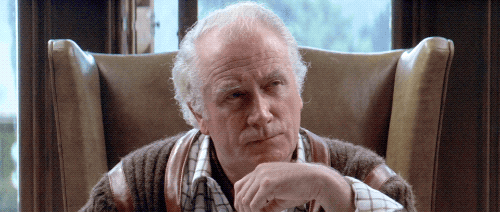
The Black Windmill (1974, dir. Don Siegel)
#the black windmill#joseph o'conor#michael caine#patrick barr#russell napier#donald pleasence#don siegel#movie gif
7 notes
·
View notes
Text

Felix Russell | Andrea Arbasino | Giacomo Beraldo | European school of Ballet | Photos by Olivier Wecxsteen
#felix russell#andrea arbasino#giacomo beraldo#black tights#ballet barre#ballet slippers#ballet boys#balletboys#european school of ballet#balletphotography
34 notes
·
View notes
Text

3 notes
·
View notes
Text
Marvel Preview #6 ‘The Hound of the Baskervilles, Part II: The Demon-Hound from Hell’ (1976) by Doug Moench, Val Mayerik, Tony DeZuniga and P. Craig Russell. Edited by Archie Goodwin. Cover by Ken Barr.

Marvel Preview #6: Marvel Preview Presents Sherlock Holmes (Spring 1976) cover by Ken Barr.
#marvel preview#marvel preview presents#sherlock holmes#john watson#the hound of the baskervilles#marvel#doug moench#arthur conan doyle#val mayerik#tony dezuniga#p. craig russell#archie goodwin#ken barr#bronze age comics#comics
47 notes
·
View notes
Text

Railroad workers. Port Barre, Louisiana. 1938
Photo: Russell Lee
26 notes
·
View notes
Text
2024 Book List
Here's a list of some new books I've found interesting and enjoyable in the last year or so. If you have any recommendations, send them in! (See previous book lists here)
Beyond Religion: Ethics for a Whole World by Dalai Lama (2020)
Love and Quasars: An Astrophysicist Reconciles Faith and Science by Paul Wallace (2019)
Stars Beneath Us: Finding God in the Evolving Cosmos by Paul Wallace (2015)
Return of the God Hypothesis: Three Scientific Discoveries That Reveal the Mind Behind the Universe by Stephen C. Meyer (2021)
The Essential Writings of Christian Mysticism by Bernard McGinn (2006)
Pastrix: The Cranky, Beautiful Faith of a Sinner & Saint by Nadia Bolz-Weber (2014)
The Making of Biblical Womanhood: How the Subjugation of Women Became Gospel Truth by Beth Allison Barr (2021)
That All Shall Be Saved: Heaven, Hell, & Universal Salvation by David Bentley Hart (2019)
The Gospel of Inclusion: Reaching Beyond Religious Fundamentalism to the True Love of God and Self by Carlton Pearson (2009)
Is God Real? Exploring the Ultimate Question of Life by Lee Strobel (2023)
Why? Making Sense of God's Will by Adam Hamilton (2018)
Losing Our Religion: An Altar Call for Evangelical America by Russell Moore (2023)
The Psychology of Christian Nationalism: Why People Are Drawn In and How to Talk Across the Divide by Pamela Cooper-White (2022)
How Jesus Became God: the Exaltation of a Jewish Preacher from Galilee by Bart D. Ehrman (2015)
The Unseen Realm: Recovering the Supernatural Worldview of the Bible by Michael S. Heiser (2015)
No god but God: The Origins, Evolution, and Future of Islam by Reza Aslan (2011)

14 notes
·
View notes
Text
The Mask (1994) 30th Anniversary


A timeless, comedy classic and a childhood favorite of mine. I use to watch this movie countless times as a kid and still have it on good, old VHS. Imagine my surprise when I discovered it was based on a super gruesome comic book. If the original intention was to make a film version of that, then it makes sense why they got Chuck Russell to direct this, who is no stranger to effects-driven horror films. However, once Jim Carrey was considered for the role, the script was rewritten to fit his comedic sensibilities. In retrospect, that was the best choice, but seeing as nowadays, movies are getting legacy reboots and requels, how do you make a new Mask movie? Do you stick to the goofy nature of the movie everyone knows and loves or do you stick to the original source material and make an ultra violent, black comedy about a cartoonish killer?
- Jose Barr (7/29/2024)
#the mask#jim carrey#cameron diaz#peter riegert#peter greene#amy yasbeck#chuck russell#new line cinema#dark horse entertainment#dark horse comics#30th anniversary#1994#comic book movie
9 notes
·
View notes
Text
Cabinet Endorsements
One thing that's flown a bit below the radar in this election is that former cabinet members haven't been acting like they usually do. Normally, former cabinet members will automatically endorse their former boss for re-election, but Trump's have not been doing that.
This is of particular interest because, while we, the voters, get to see the President give speeches and the like, we don't actually work with him. Presumably a cabinet member is someone who agrees with the president and who the president trusts and who gets to work closely with the president, so their opinion of the president is an important benchmark.
With that in mind, let's take a look at the 44 former cabinet members of the Donald J. Trump administration and the 2 former cabinet members of the Joseph R. Biden administration. I'll put an (E) next to the ones that have endorsed their former boss, an (H) next to the ones who haven't yet, and an (R) next to the ones who have outright refused to do so.
Cabinet Members of the Donald J. Trump Administration (R) VP Mike Pence (H) Sec. State Rex Tillerson (H) Sec. State/CIA Director Mike Pompeo (E) Sec. Treasury Steven Mnuchin (R) Sec. Defense James Mattis (H) Sec. Defense Patrick Shanahan (nominated) (R) Sec. Defense Mark Esper (H) Sec. Defense Christopher Miller (acting) (H) AG Jeff Sessions (R) AG William Barr (H) AG Jeffrey Rosen (acting) (E) Sec. Interior Ryan Zinke (H) Sec. Interior David Bernhardt (H) Sec. Agriculture Sonny Perdue (E) Sec. Commerce Wilbur Ross (H) Sec. Labor Andrew Puzder (nominated) (H) Sec. Labor Alex Acosta (H) Sec. Labor Eugene Scalia (H) Sec. HHS Tom Price (H) Sec. HHS Alex Azar (H) Sec. HHS Pete Gaynor (E) Sec. HUD Ben Carson (H) Sec. Transporation Elaine Chao (H) Sec. Transportation Steven Bradbury (acting) (H) Sec. Energy Rick Perry (H) Sec. Energy Dan Brouillette (H) Sec. Education Besty DeVos (H) Sec. Education Mick Zais (acting) (H) Sec. VA David Shulkin (E) Sec. VA Ronny Jackson (nominated) (H) Sec. VA Robert Wilkie (R) Sec. HS John Kelly (H) Sec. HS Kirstjen Nielsen (H) Sec. HS Chad Wolf (nominated) (E) US Trade Rep. Robert Lighthizer (H) DNI Dan Coats (H) DNI John Ratcliffe (H) UN Ambassador Nikki Haley (H) OMB Directory Mick Mulvaney (E) OMB Director Russel Vought (H) CIA Director Gina Haspel (H) EPA Admin. Scott Pruitt (H) EPA Admin. Andrew Wheeler (H) SBA Admin. Linda McMahon (H) SBA Admin. Jovita Caranza
Cabinet Members of the Joseph R. Biden Administration (E) Sec. Labor Marty Walsh (E) OMB Director Neera Tanden (nominated) (H) Office of Science and Tech. Director Eric Lander
The first thing we notice, obviously, is that there are a whole lot more former Trump cabinet members. This is partially because Biden is still in office so his 23 current cabinet members are not counted (it'd be a huge surprise if they didn't endorse him and they probably wouldn't still be working for him if they didn't), but it's also because Trump had way above average turnover for cabinet officials, 19 in the first four years not including the 5 who resigned due to his handling of the 2020 election results (not included because Biden hasn't reached that point in his first term yet), while Biden has had far below average turnover, only 3 so far.
So a lot more people shuffling in and out of the Trump administration, but we also notice a ton more H's than E's there. Heck, there's almost as many R's among Trump's people as there are E's (5 to 7). Meanwhile, Biden's shooting 2 for 3 and the third one hasn't (at least not that I could find) ruled out endorsing him.
Keep in mind, endorsing the nominee of your party is pretty much the bare minimum that any party operative needs to do. Imagine if you applied for a job somewhere, the first question was "do you think this company should be in business", and you answered "no". You probably wouldn't be getting a job there. In other words, refusing to endorse has some big consequences for the people doing it, not just costing them a job in the potential next Republican presidency, but locking them out of the party entirely, and yet a good deal of the people who worked for Trump disliked working with him so much that they're doing it anyways.
As I said, this tends to fly below the radar because it's kind of a formulaic ritual; of course members of the President's party who are closely tied to him are going to endorse him for re-election! That's why you should pay attention now that most of the people who've worked with Trump aren't doing so. It says something, something big.
16 notes
·
View notes
Text









Staff Pick of the Week
In 1846 the British and Americans finally settled their land dispute over the Oregon Territory, potentially preventing another war from breaking out, as both countries had begun to populate the land. One year before the treaty was finalized, the British sent out Lt. Henry J. Warre and another officer to do a reconnaissance mission of the territory. The primary goal was to get a lay of the land if war was truly to break out. While taking military notes, Lt. Henry J. Warre also completed at least 80 sketches of the natural environment and the groups of people they encountered. Although his findings were never used since both governments had reached peace before his journey was completed, a folio of his work started to circulate in London, published two years after his return. Why the artwork had been made wasn’t released to the public.
Our edition of Warre's Sketches in North America and the Oregon Territory was published in Barre, Massachusetts by the Imprint Society in 1970 and printed by the Meriden Gravure Company in Connecticut in an edition of 1,950. Warre’s 71 watercolors were reproduced from the originals in four-color duotone offset lithography. The font is Monotype Bell set A. Colish in Mt. Vernon, New York, on paper made by the Curtis Paper Company in Newark, Delaware. Finally, the binding was done by the Russel-Rutter Company in New York.
I really liked the art in this book, especially how soft the colors are, and even though there isn’t a lot of details, Warre managed to capture the beauty of his environment. It’s also fascinating that his evocative watercolors were not made simply to capture the beauty of the journey but were an act of reconnaissance. Flipping through the pages truly gives you an idea of what his journey looked like and what he thought was important to capture. When I picked this book up I didn’t realize it had such a cool story behind it!
View other Staff Picks.
- Sarah W, Special Collections Undergraduate Intern
#Staff Pick of the Week#watercolors#Oregon Territory#Sketches in North America and the Oregon Territory#Henry J. Warre#Imprint Society#Meriden Gravure Company#A. Colish#Curtis Paper Company#Russel-Rutter Company#military reconnaissance
43 notes
·
View notes
Text
Greg Owen at LGBTQ Nation:
Tuesday night in Fort Worth, Texas, right-wing pundit Tucker Carlson welcomed ’90s comedy icon Roseanne Barr to the stage. She was of a number of far-right conspiracy theorists, failed former news hosts and washed-up actors he has interviewed on his variety-styled “Tucker Carlson Live Tour” across America. The onetime Fox News personality is using the tour to promote his own Tucker Carlson Network, a $6-a-month digital subscription service. His other guests have been hawking books (failed former Fox News host Megyn Kelly), seeking elf-redemption (accused sexual abuser Russell Brand) and circling a soon-to-be failed vice-presidential run (Sen. J.D. Vance [R-OH]). Barr was there to promote conspiracy theories.
After assuring Carlson’s audience that everyone in Hollywood is “gay as hell,” the former Roseanne star rolled out a string of golden oldies in front of a crowd hungry for 90’s nostalgia and Pizzagate-level paranoia. “You know they eat babies,” Barr blurted. It’s unclear if “they” referred to Democrats, the Deep State or Hollywood executives who denied her a successful career after her racist, antisemitic, career-ending outbursts. “That is not bullshit. It’s true!” she proclaimed. Then Carlson teed Barr up with a clickable contemporary reference conflating “them” with the Haitian immigrants allegedly overrunning America. “So it’s not just the dogs and the cats? Not just the pets?” Carlson asked, even though there’s absolutely no evidence backing the racist anti-immigrant claim. Barr was off and running. “It’s not just the dogs and the cats,” she said. “There are full-on vampires! And everybody still thinks I’m crazy. But I’m not crazy. They’re full-on vampires. They love the taste of human flesh, and they drink human blood.”
Washed-up actress and conspiracy theorist Roseanne Barr was a part of the Tucker Carlson Live Tour, and during her Tuesday appearance, Barr pushed Pizzagate and QAnon-tinged rhetoric such as insinuating that migrants are full-on vampires.
#Roseanne Barr#Tucker Carlson#Springfield Cat Eating Hoax#Tucker Carlson Network#Tucker Carlson Live Tour#Pizzagate#QAnon
3 notes
·
View notes
Text

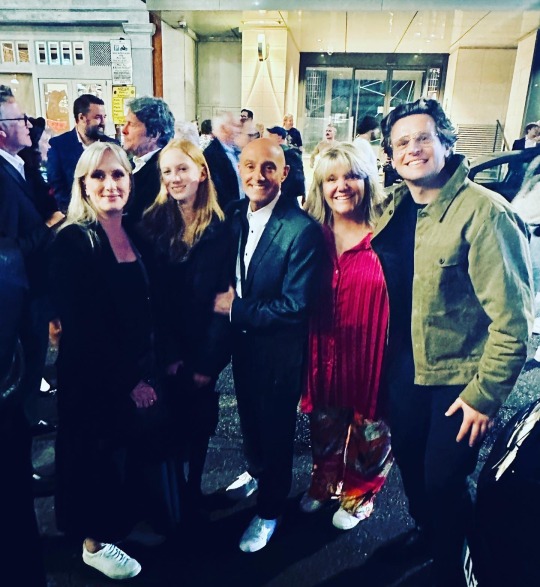
Jonathan with Jenna Russell, her daughter Betsy, John Barr and Alison Jiear after attending the filming of Hannah Waddingham’s Christmas special for Apple+ at the London Coliseum yesterday. Jenna played Mary in Maria Friedman’s original London production of ‘Merrily We Roll Along’. Photos from John Barr on Facebook.
25 notes
·
View notes
Text
Russell Janzen on Retiring
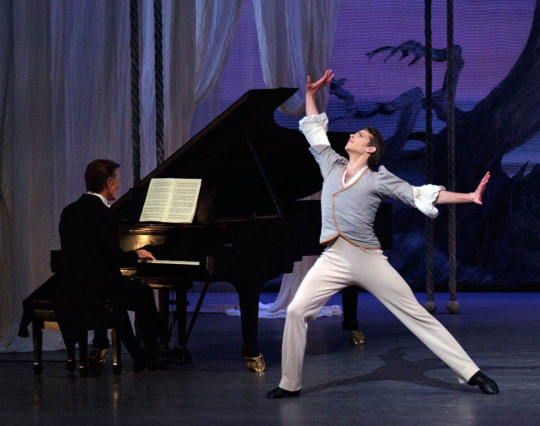
Russell Janzen in Balanchine's Davidsbundlertänze, 2014. Photo: Paul Kolnik via DanceTabs
Russell Janzen gave his last performance with the New York City Ballet last Sunday, partnering Sara Mearns in the Diamonds section of Jewels. He published his thoughts on retiring in The New York Times.
On Leaving the Life of the Body: A Dancer Reports
“I know that I am about to give up one of my primary ways of being me,” Russell Janzen writes about retiring from New York City Ballet after 16 years.
By Russell Janzen
It is one of my last ballet classes as a professional dancer. Halfway through barre we do rond de jambes—an exercise in which you paint half circles on the floor with your toes. The teacher, Gonzalo Garcia, sets a combination that sweeps back and forth as we transfer our weight from one foot to the next, our arms swinging to amplify our movements.
Extending through to the tips of my fingers and reaching my legs long I feel expansive. It’s not exactly that I feel free—I am doing a prescribed exercise, holding onto a wooden bar—but the stretch of my body and the rumbling swells of the music create a sense of rightness and liberation. I feel present and energized, my body alive. The pleasure of this moment is a relief; it’s a sensation I am forever pursuing, because at the best of times dancing can make me feel whole and wholly myself. On Sunday, I will retire from New York City Ballet after 16 years with the company. I have spent over a year preparing myself, and I am ready. But I know that I am about to give up one of my primary ways of being me.
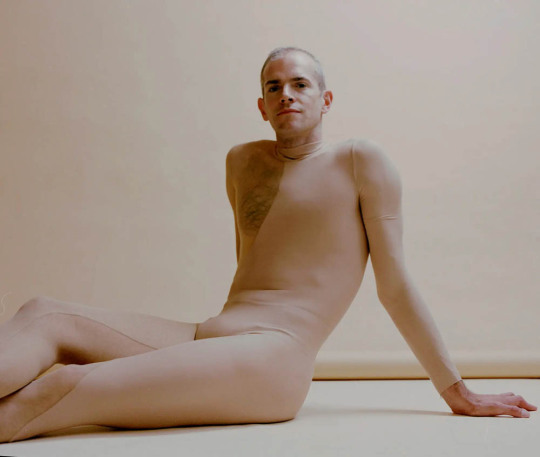
“As dancers, we become our bodies, in ways both gratifying and reductive.” Photo: Jingyu Lin for The New York Times
My specific physical capabilities—the particular functioning of my muscles, joints, bones and tendons—have been essential to my livelihood. And to my happiness, too, because in moments of alignment and control my body is not just the vessel for my self-expression, it is the expression itself.
So I wonder: Who will I be when my body is no longer shaped by turning out and jumping and lifting? What will I like to do when I don’t have to save my back or my calves or my feet for the next night, the next week, the next month? And how will I feel after these final shows: Like I’m getting my body back, or like I’m losing it?
In spring 2019, I danced the central duet in Justin Peck’s “Rodeo" for the first time. The debut came at one of these sweet spots in my career: I was dancing the way I had always wanted to dance. I wasn’t doing everything perfectly, I still had nerves—and I can’t speak to how I looked—but I felt in control in a way I never had before. I just felt good in my body. Settled.
In the first performance, my partner Sara Mearns and I walked out onstage, and when the music started it was slower than we had rehearsed. Much slower. Sara gave me a look like, “Oh, boy.” That look was both an eye roll aimed at the conductor and an invitation to meet the challenge he had set for us. I smiled at Sara as if we weren’t in front of thousands of people and pushed her into the air, higher than we’d practiced—and then I launched myself after her and we danced.
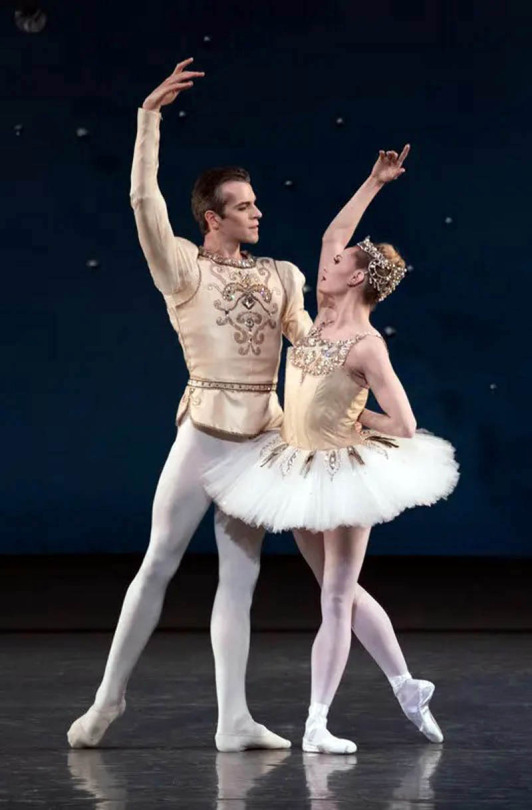
Russell Janzen with Sara Mearns in Diamonds. Photo: Erin Baiano via the NY Times
But it didn’t feel like dancing. It felt like living, in a heightened, intoxicating way. It felt like we were the music, and the dance. We were ourselves in the most essential and simple way but also we were something more, something bigger. We were dancing. And I don’t mean that as a verb; I mean it as a noun. We were all that dancing could be in that moment, to that music, on that stage.
Of course we were also wearing lots of makeup and we were sweating and trying to point our feet and stand tall, and I was trying to keep her on balance and she was trying to hold up her leg. But we were not thinking about this trying, we were just being, and it felt so right.
Throughout my career there have been many moments like this, when how I feel in my body makes my dancing seem inseparable from myself. Sometimes these moments are brief, lasting just one entrance or one class, other times I can hold onto the feeling for weeks.
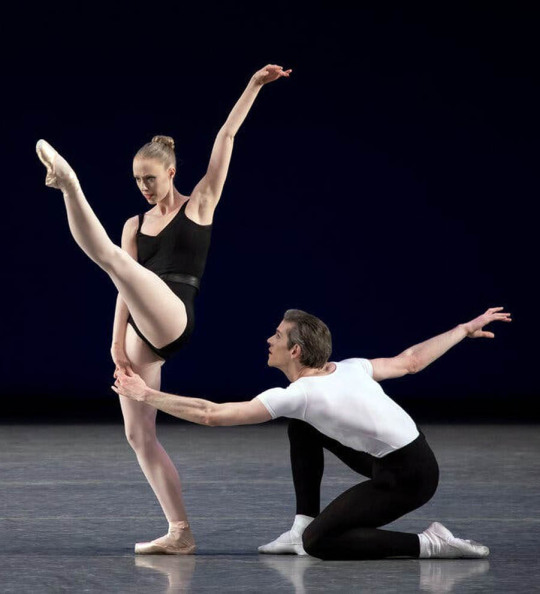
Janzen partnering Teresa Reichlen in Balanchine’s Agon in 2019. Photo: Erin Baiano via the NY Times
As dancers, we become our bodies, in ways both gratifying and reductive. We always deal with pain and tightness — navigating physical limitations is a part of this art form — but when muscles cooperate, and choreography feels natural, even grappling with the body’s capabilities offers rewards.
This intense relationship with my physicality has been fulfilling, a gift. And yet being tied to my body in this way has also been restrictive and often disappointing.
I spent my first six years with the company cycling through career-pausing injuries, never staying healthy long enough to gain much momentum. At a certain point my body became more manageable and I gained traction in my career — dancing bigger roles, being promoted to soloist, then principal.
But the injuries continued: a tear in my shoulder, a sticky rib, a trouble spot in my spine that persists, ankle sprains, back spasms. Ballet is punishing on most every body, but at 6-foot-3 I am not compact. My height and length can look impressive onstage, but my body doesn’t always absorb the impact of dancing and partnering well, making me — and my spine especially — susceptible to injury and strain.
It’s thanks to a fleet of physical therapists and movement specialists that I danced as much as I did. I spent hours each day doing exercises, taking preventive measures to protect my back and prepare my body for what I had to do each night. In order for me to dance, my body — its needs, aches and peculiarities — dictated everything: how long I sat, how I slept, how I traveled, how I dated, how I spent time with my family, how I relaxed, how I lived.
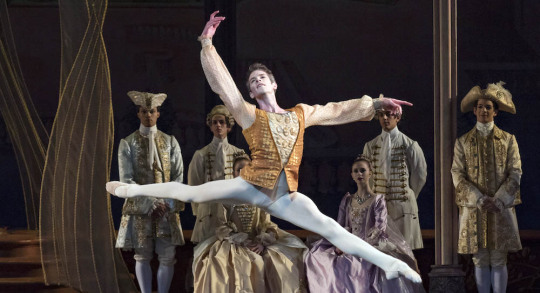
Janzen in Peter Martins's staging of The Sleeping Beauty, Act II, 2017. Photo: Paul Kolnik via Dance Informa
Relying on my body in the way I’ve needed to has meant sacrifices and pain. Sacrifices and pain that were frustrating but worth it because of onstage experiences like “Rodeo,” because I got to dance ballets I always dreamed of dancing: Jerome Robbins’s “Dances at a Gathering”; George Balanchine’s “Agon,” “Swan Lake,” “Diamonds.” And because of the dancers with whom I shared the stage.
Since late fall of 2019 I have had two new injuries — one in my ankle and one in my knee — that again kept me from ballet. Now that my dancing body has been going for decades, the recoveries have been challenging. I’m 34; healing takes longer than when I was 19, and when I am deemed ready to go back onstage my body doesn’t feel like it did before. I’m told it likely won’t again.
Martha Graham famously said that a dancer dies twice, the first time when they stop dancing — when the body can no longer do what it once did. It’s this first death, she said, that is more difficult. And this is where I am now. No longer able to do what I once did.
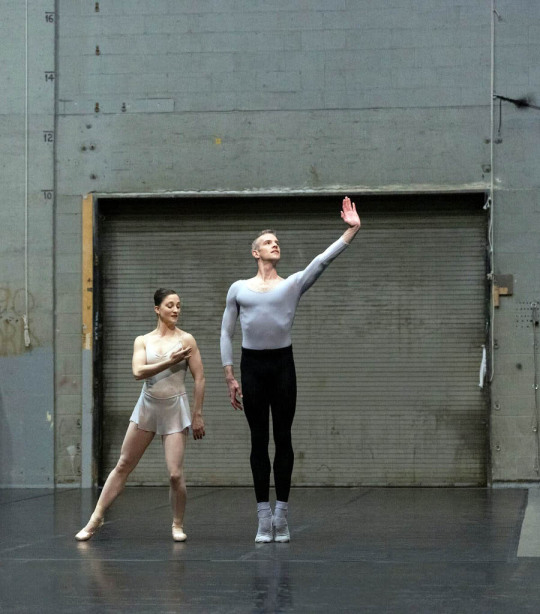
Janzen and Ashley Bouder filming Balanchine’s “Duo Concertant” for Sofia Coppola in 2021. Photo: Erin Baiano via the NY Times
With the latest injury, a patellar tear, I chose to dance until it proved too painful and so had months to prepare myself for the time off. I made plans, I gave myself projects, I had a loving support system. And yet while I was healing there was a part of me that felt like I was waiting for my life to restart. So much of my life as a dancer has been spent waiting to live, biding time or saving myself for when I am out onstage again dancing. Waiting for my body to once again be able to do what I need it to do to feel like me.
I have had enough rewarding shows in the last year to know that I could continue dancing—shift how I approach the work and find new meaning in a more limited repertoire. But I’m ready to stop. I am ready to pay attention to something new, to reorient my relationship to myself and to those around me. My body, my dancing body, has been the part of me I have prioritized above all else for over 16 years—the part to which I have given the most attention and care. And I don’t want to pay attention to my body in this way anymore, with my physicality and ever-increasing limitations dictating how I live both onstage and off.
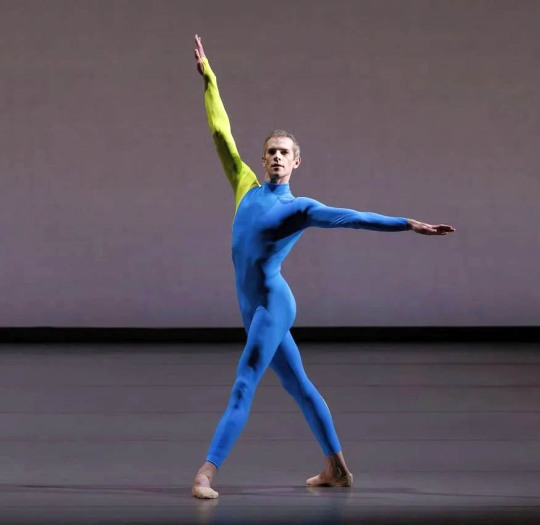
Janzen in Pam Tanowitz's Law of Mosaics. Photo: Erin Baiano via Gramilano
There is much loss in this first death. I will not diminish the grief and sadness of this time, but as I’m nearing the final moments of my dance career I’m also thinking about how this ending means I get to have another life, one with different kinds of freedom.
After finishing dancing I plan to pursue a degree in social work. I don’t have much of a sense of what this will look like or where it will lead me, but I know that it will offer me an entirely different framework through which I might understand and experience the world. Rather than narrowing in again on something specific, my hope is that this will be a time of exploration, an opening up of possibilities.
As I am writing this, I have three remaining performances including my retirement show. I’ll be dancing “Diamonds” in Balanchine’s “Jewels,” a ballet that has taken me through my entire career. It was my first ballet with the company (aside from “The Nutcracker”). And in 2014 the principal role, which I’ll be retiring with, was one of my first really major parts.
“Diamonds” ends in an epic display of grandiosity and classicism. Thirty-six dancers move in shifting patterns—turning, jumping, and polonaising around the stage. In one of the last moments the entire cast moves in unison. All the dancers unfurl a leg into an extended line in front of them, foot pointed and rotated, displayed for the audience: Look at our feet and our legs, look at these bodies of ours. Watch us dance and see how this life, our dedication, and our passion has shaped us.
On Sunday, while my back might be tight, and my knee might not bend as pliantly as it once did, my body won’t be failing me. This is my body now, after 16 years dancing the greatest ballets. In these last shows I will get to support a treasured partner, dance with people I’ve known for much of my life, and propel myself into the air and around the stage. I will get to be in my body, in whatever state it is in, in a way that I love, using it to take me through the contours and shapes of one of my favorite dances. Then the curtain will come down, and I will move on to something new.

Sara Mearns and Janzen in Balanchine's Chaconne, 2014. Photo: Paul Kolnik via Pinterest
#Russell Janzen#retirement#dancer retires#dancer retirement#New York City Ballet#NYCB#Russell Janzen retires#Russell Janzen writer#ballet#ballet retirement#identity#Balanchine
7 notes
·
View notes
Text


1 note
·
View note
Text
On repeat tag game!
Tagged by @auspex-author
Rules: shuffle your on repeat playlist 10 times and post the results
I did this semi recently, so I shan't bother all my usuals with tags again, but if you wanna share, feel free to join in! I love learning about new music, so tag me if you want!
#boy the way i still am listening to the alan wake soundtrack#it has me in a choke hold#im pretty sure most of the ost is on my repreat so we're lucky its not just that#also a bunch of these songs are on the playlist I have made for a potential bg3 warlock tav#im brewing up a new character like I have time for another play through lol#no really though i have Thoughts#ill probably introduce him soon bc right now i gotta draw him yo#and inevitably all this comes together to mean that i just have a lot of game soundtracks I listen to/ the algorithm keeps pushing at me#Spotify
2 notes
·
View notes